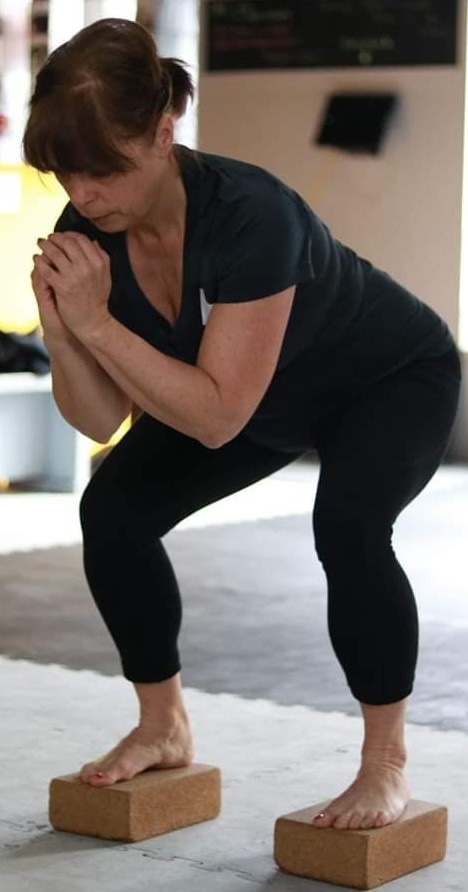By Dan Lalande
“Working out is one thing, but hiring a personal trainer is another.”
Sage advice from a savvy specialist: Joanne Merrett. The Ottawa-based fitness advocate (and athlete) is devoted to helping those 55 and older meet fitness goals, target trouble areas, cope with medical conditions and recover from injuries.

She has worked at The Running Room and the new defunct UpRise Fit Gym and was the assistant health and fitness coordinator for the Bank of Canada. She also oversaw the fitness programs for the Old Ottawa South Community Association, until recently going the freelance route. She continues to help clients maintain muscle mass, improve balance, reduce the risk of chronic disease and cope with the physical realities of aging.
“A personal trainer can provide people over 55 with a personalized workout plan that considers existing and potential limitations,” Joanne specifies. “They can also help prevent injuries by ensuring proper form and technique, which leads to better quality of life and increased confidence in achieving health and wellness goals.”
 Among the conditions she commonly sees are joint pain from osteoarthritis, back and neck discomfort, decreased muscle mass, heart disease, diabetes, cognitive decline and diminishing immunity. Without an individualized program, many of these conditions, regardless of how regularly a person exercises, limit what can be a more rewarding stage of life.
Among the conditions she commonly sees are joint pain from osteoarthritis, back and neck discomfort, decreased muscle mass, heart disease, diabetes, cognitive decline and diminishing immunity. Without an individualized program, many of these conditions, regardless of how regularly a person exercises, limit what can be a more rewarding stage of life.
Before selecting a fitness mentor, Joanne advises people to do their homework. She recommends looking for a reputable professional with the right mix of education and certifications, industry experience, and most of all, a recognized facility for working with the aging population.
“Look for someone who’s worked with people who share your individual needs,” she clarifies. “Once they design a program for you, you should work with them one to three times a week depending on your health status—that, or you can work the program yourself with your trainer following up with you every three to six weeks.”
As that kind of arrangement can become a long-term connection, chemistry is key. “A trusting relationship between trainers and clients is essential,” says Joanne. In other words, before signing on long-term with somebody, test them out. Look for someone with a palpable interest in your well-being and specific struggles, as we as a style of communication you respond to best.
Joanne, whose rapport with clients is legendary, is a certified functional movement and rehab specialist. Before that, she was a law clerk—until she ran her first marathon. The experience inspired her to get out from behind her desk for good. Since then, she’s participated in half-marathons, marathons, duathlons and Iron Man competitions and she continues to hike in the Gatineaus in all seasons. In addition, she’s coached runners and triathletes with MS, Parkinson’s, Down syndrome, and concussion-related restrictions.
 She’s also on top of the latest beneficial trends. “Right now,” she shares, “the fitness industry is seeing significant growth in wearable technology, mobile apps and other personalized experiences. Functional fitness and exercises aimed at improving mental health are also very big, as well as high-intensity interval training (HIIT).”
She’s also on top of the latest beneficial trends. “Right now,” she shares, “the fitness industry is seeing significant growth in wearable technology, mobile apps and other personalized experiences. Functional fitness and exercises aimed at improving mental health are also very big, as well as high-intensity interval training (HIIT).”
HIIT is a form of training varying shorts bursts of intensity with brief periods of rest. It’s a proven shortcut to weight loss and strength that has also proven beneficial for one’s heart rate, blood pressure, blood sugar and insulin levels.
Despite its popularity, Joanne and other health professionals caution against committing to this style of workout without some form of qualified mentorship. “To address most issues associated with healthy aging,” she advises, “people should focus on maintaining a balanced diet, getting regular physical activity, prioritizing quality sleep, practicing stress management, engaging socially, managing existing conditions and visiting a healthcare provider on a scheduled basis.”
… and considering the services of a reputable personal trainer.






